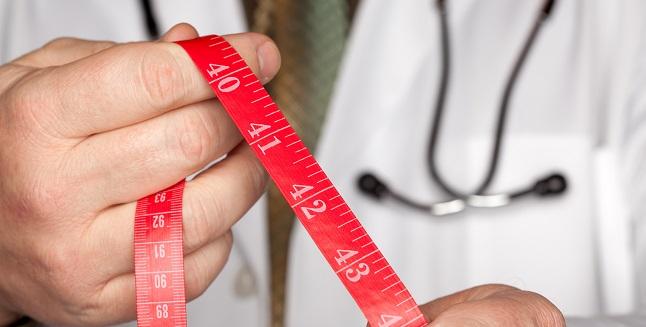Rivaroxaban-Aspirin Combo Works in ASCVD Across BMI Groups
The results, from a secondary analysis of COMPASS, suggest dose adjustments based on body weight aren’t needed.

Use of low-dose rivaroxaban (Xarelto; Bayer/Janssen) plus aspirin improves outcomes in patients with chronic atherosclerotic vascular disease irrespective of body size, a secondary analysis of the COMPASS trial shows.
In that trial, combining rivaroxaban 2.5 mg twice daily and aspirin 100 mg per day reduced the composite of CV death, stroke, or MI at the cost of more major bleeding, and those effects did not vary significantly across categories of body weight or body mass index (BMI), researchers led by Tomasz Guzik, MD, PhD (University of Glasgow, Scotland), report.
The results, published in the February 9, 2021, issue of the Journal of the American College of Cardiology, “show that this combination of a vascular dose of rivaroxaban with aspirin can be safely used across a broad range of body weights and does not necessitate dose adjustments,” Guzik told TCTMD.
He cautioned that additional studies are needed before making firm conclusions about the efficacy and safety of the approach—called dual-pathway inhibition—in patients with very low or very high body weight because of low numbers of COMPASS participants in those groups.
Uncertainty About the Impact of Body Size
Addressing this regimen’s effects in patients who are overweight or obese is important, Guzik said, because after the lower vascular dose of rivaroxaban was approved, physicians started questioning whether it would be effective in patients with high body weight or BMI, who already have a heightened cardiovascular risk.
Although rivaroxaban and the other direct oral anticoagulants (DOACs) are given at fixed doses, experts from the International Society on Thrombosis and Haemostasis suggest that the agents should not be used in patients with a body weight greater than 120 kg (about 265 lb) or a BMI of 40 kg/m2 or greater. Guidance on the management of atrial fibrillation from the American College of Cardiology, the American Heart Association, and the Heart Rhythm Society, on the other hand, do not specifically address whether DOAC use should be modified based on body size.
To explore the issue, Guzik et al looked at data from the COMPASS trial, which showed that among patients with chronic CAD or PAD, the combination of low-dose rivaroxaban and aspirin reduced the risk of CV death, stroke, or MI—and increased the risk of major bleeding—compared with aspirin alone. There were few patients with a BMI below 18.5 kg/m2, and they were excluded. Of the 27,207 patients who were included in this analysis, 24% had a normal BMI (18.5 to < 25 kg/m2), 44% were overweight (25 to < 30 kg/m2), and 32% were obese (≥ 30 kg/m2).
There was a reduction in the primary outcome of CV death, stroke, or MI with dual-pathway inhibition versus aspirin alone that was consistent across BMI categories:
- Normal (3.5% vs 5.0%; HR 0.73; 95% credible interval [CrI] 0.58-0.90)
- Overweight (4.3% vs 5.1%; HR 0.80; 95% CrI 0.66-0.96)
- Obese (4.2% vs 6.1%; HR 0.71; 95% CrI 0.57-0.86)
Similar results were seen in an analysis based on body-weight categories. The increase in major bleeding and the reduction in net clinical benefit with the combination of rivaroxaban and aspirin in the overall trial also did not vary significantly based on body size. Moreover, efficacy and safety appeared consistent when further subdividing the highest BMI category into class 1, 2, and 3 obesity.
Questions Remain
One potential concern about using low-dose rivaroxaban and aspirin in patients with larger body size is that the occurrence of complications like hemorrhagic stroke and bleeding might be exacerbated in the setting of obesity, Guzik said. This analysis did not show a difference in safety profile based on body size, and that’s an important message, he added.
This particular inquiry based on body size is of interest because people with higher BMIs have increased cardiovascular risks, commented Sadiya Khan, MD (Northwestern University Feinberg School of Medicine, Chicago, IL). “That said, it’s especially important in the literature around [DOACs] because of their hypothesized clearance that may differ in individuals in higher weight categories,” said Khan, who wrote an accompanying editorial with Karlyn Martin, MD (Northwestern University Feinberg School of Medicine).
As for whether the findings of this COMPASS analysis indicate that a dose adjustment related to body size is not needed, Khan said, “Based on their data, I think that is true between a BMI of 18.5 and 39.9 kg/m2, which is where the robustness of their data extends that recommendation.” She added, however, “I wouldn’t extend that general statement across all categories” of BMI.
Other key questions remain unanswered, too, Martin and Khan note in their editorial. It’s not clear whether the findings can be applied to other DOACs, whether the combined regimen is superior to dual antiplatelet therapy, and how best to implement use of the approach in clinical practice while considering issues of access and cost, they say. “Issues of healthcare access and cost will be even more paramount in the aftermath of the [COVID-19] pandemic as millions have lost insurance coverage.”
In addition to further research addressing the impact of rivaroxaban plus aspirin in patients at the extremes of body size, more studies are needed to explore effects in the older patients and those with end-stage renal disease, Martin and Khan note.
Future investigations, Khan said, should focus on the cost-effectiveness of combining rivaroxaban and aspirin in the setting of chronic atherosclerotic vascular disease, as cost is one of the main barriers to adoption of the approach, along with concern about increased bleeding.
Also, moving to a more risk-based approach to delivering the treatment “would allow implementation of rivaroxaban in a more cost-effective way so that we could target those who are at the greatest risk and have the least concern for bleeding,” Khan said.
Todd Neale is the Associate News Editor for TCTMD and a Senior Medical Journalist. He got his start in journalism at …
Read Full BioSources
Guzik TJ, Ramasundarahettige C, Pogosova N, et al. Rivaroxaban plus aspirin in obese and over-weight patients with vascular disease in the COMPASS trial. _J Am Coll Cardiol. 2021;77:511-525.
Martin K, Khan SS. Dual antithrombotic therapy targeting residual risk for atherosclerotic cardiovascular disease: does body mass index matter? J Am Coll Cardiol. 2021;77:526-528.
Disclosures
- Bayer AG funded the COMPASS trial and had nonvoting members on the steering committee. The COMPASS trial data were collected and managed by the Population Health Research Institute (PHRI). The data analysis for this paper was conducted by PHRI.
- Guzik reports receiving grants and speaking/consulting fees from Bayer during the conduct of the study and having received funding from the European Research Council.
- Martin and Khan report no relevant conflicts of interest.





Comments